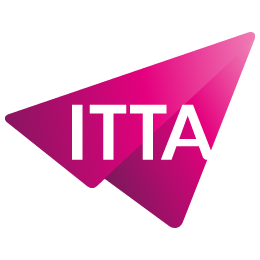Home > Identify your team’s training needs
As the world is constantly evolving, companies strive to keep up with the times and constantly follow innovations. Over time, the needs and requirements of the market evolve. The professional skills required in all sectors of activity are more specialized than ever and learning becomes mandatory even for experienced employees. In addition to these external factors, today’s management focuses much more on the “human” aspect of employees.
It is imperative today to value each employee to keep them motivated and increase their productivity. In this sense, continuous training of the team is a particularly effective strategy to follow the market trends while providing added value to the employees. Of course, it is essential that the subjects covered and the training plan correspond to the needs and objectives of each team within the company. It is therefore essential to carry out a precise analysis of these needs and knowledge levels beforehand. But how do you go about it?
Employee training is probably one of the most important responsibilities that managers take on.

A training need refers to the gap between the acquired skills of employees and those required to perform a specific mission. This makes it possible to achieve the annual development objectives of the employee set by the company or necessary for the conduct of a project. A manager must use the gap analysis to identify the knowledge, skills and abilities lacking and determine the various improvements necessary for the employee’s development and the company’s competitiveness.
In addition to needs assessment, the identification and analysis of training needs can be done by carefully studying the most common problems within the team. It is also essential to monitor the various changes in the company and the market: new technologies, best practices, devices and news. The needs analysis makes it possible to proactively define measures to support employees in the face of these changes, or even to anticipate them through various training courses.
The training manager must also see the links between the lack of professional training on a specific subject and the decrease in team productivity. He can also broaden his research to the competition in order to anticipate changes in his own industry and expect higher business goals. What is his team lacking to be able to compete with the competition, or even to have a competitive advantage? It is up to him to collect the important information on this subject.
It is important that the employees are receptive to the plans to develop their skills. The training manager must then take the time to listen to the employees’ requests in order to respond to them as best as possible to improve the work. This kind of information can be collected during an individual interview (annual review) or by team.
Will the company be able to reach the goals on schedule or even in advance ? It is the role of the training manager to keep abreast of the regulations in force, depending on the company’s field of activity. This type of monitoring can have a considerable impact on the company’s overall strategy.
Once all these steps are completed, it is time to select the most appropriate training programs for the team. The training manager will draw conclusions through the results of his research and surveys.
Depending on the nature of its activities, each company has a strategic development plan for the years to come. In order to reach the set objectives, it is important that you conduct training that can bring a real added value and interest towards the company’s challenges. Learning, development and sustainable personal skills are always a good investment.
This step is part of a strategic orientation. The manager or the training manager must ask the right questions: what are the company’s urgent needs? Are there any strategic developments underway? What about long-term training development? What are the company’s priorities? What are the missions of each team in order to achieve the expected results? What are the new skills needed to evolve? How can I contribute to my employer brand? How can I keep talented people and appeal to future high potentials?
All this information will help you build a solid and necessary skills development plan for your employees.
As stated above, it is important to take stock of the training needs of your employees. You should know that there are 2 types of needs:
You now have all the information you need to start developing your training plan! Think of transcribing your data on an Excel file or a specific software to make it easier to read.
In any case, be aware that the list of needs must be prioritized. In order to establish priorities, you must take into account a few particularly important criteria:

ITTA is the leader in IT training and project management solutions and services in French-speaking Switzerland.
Our latest posts
Subscribe to the newsletter

Nous utilisons des cookies afin de vous garantir une expérience de navigation fluide, agréable et entièrement sécurisée sur notre site. Ces cookies nous permettent d’analyser et d’améliorer nos services en continu, afin de mieux répondre à vos attentes.
Monday to Friday
8:30 AM to 6:00 PM
Tel. 058 307 73 00
ITTA
Route des jeunes 35
1227 Carouge, Suisse
Monday to Friday, from 8:30 am to 06:00 pm.